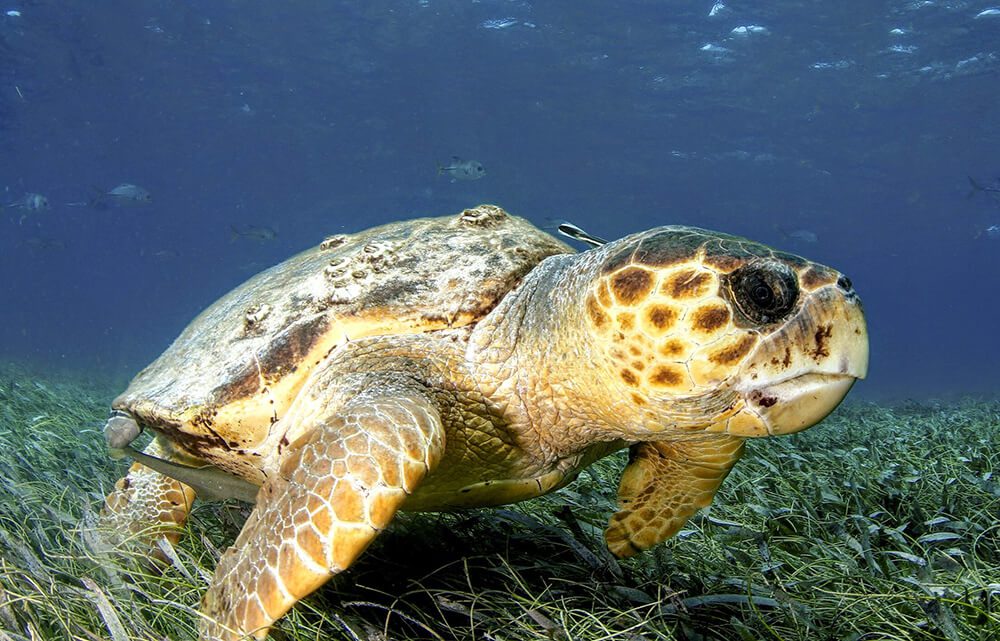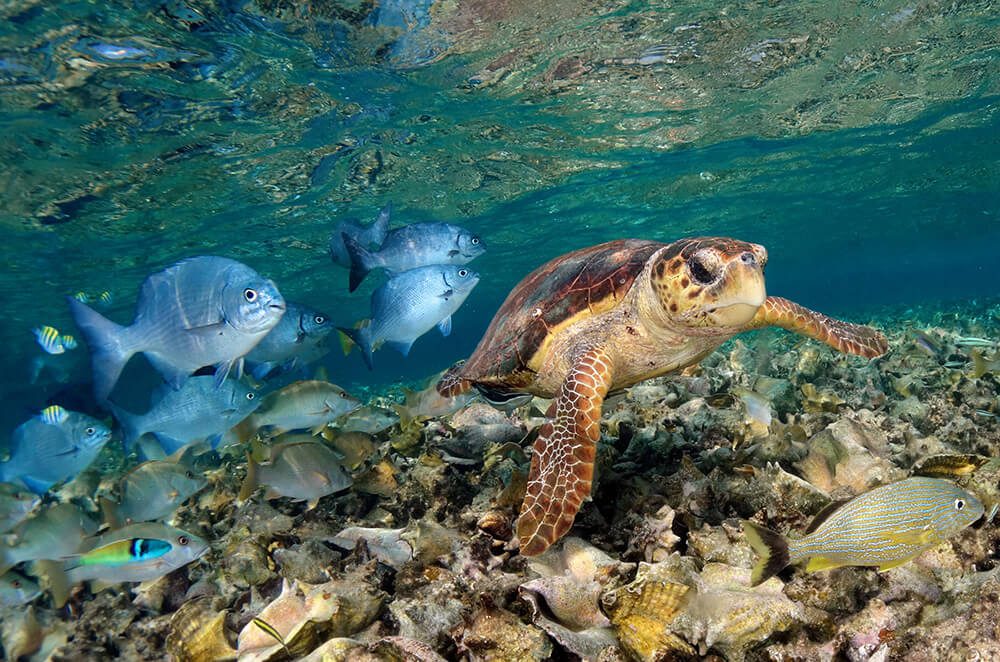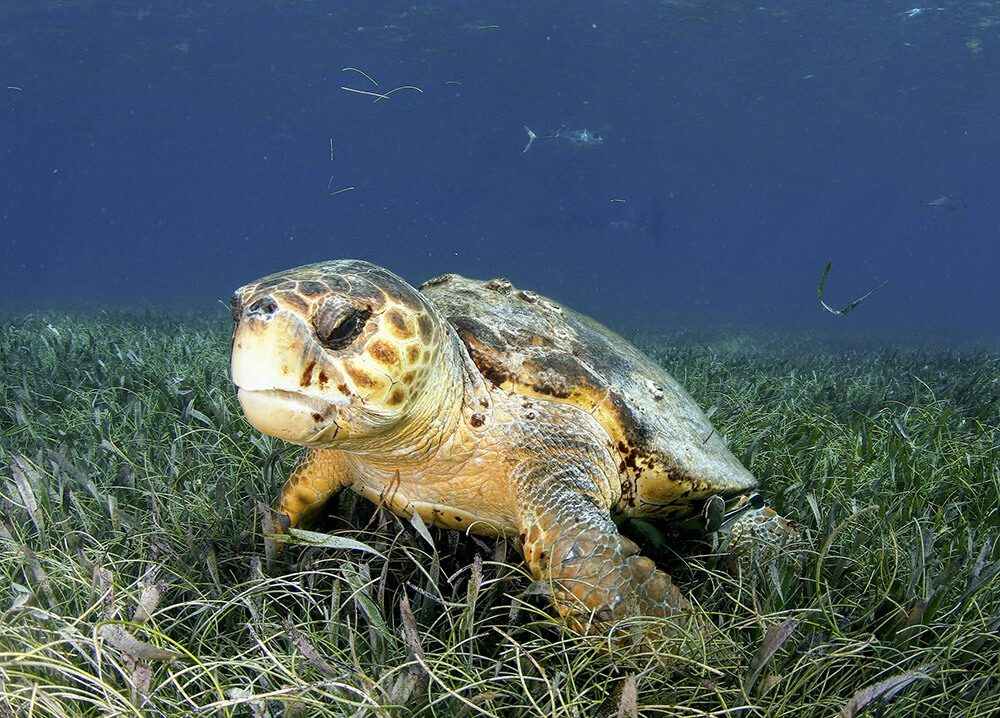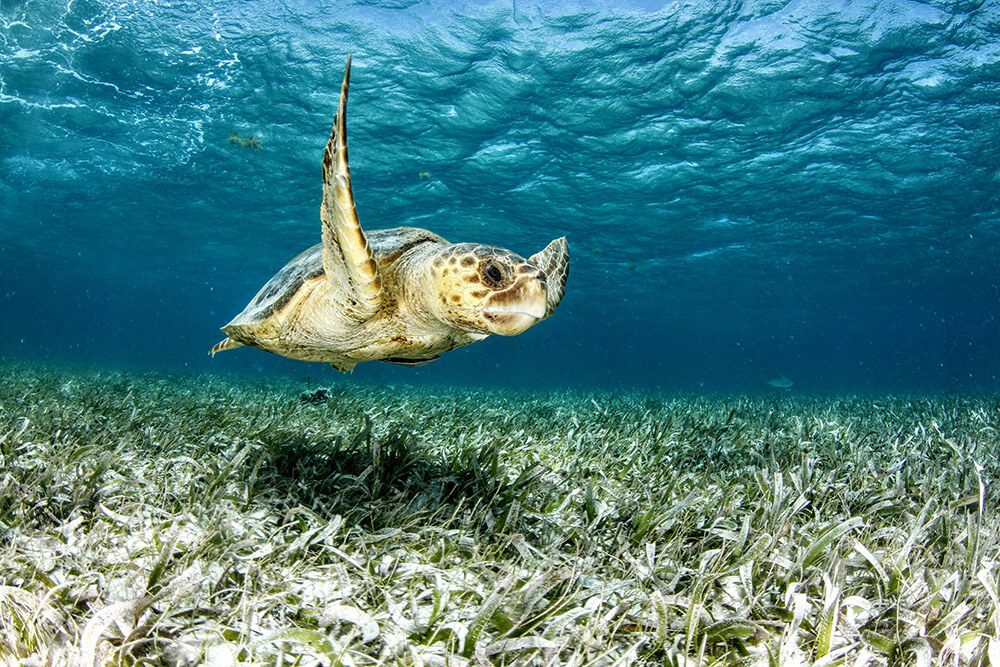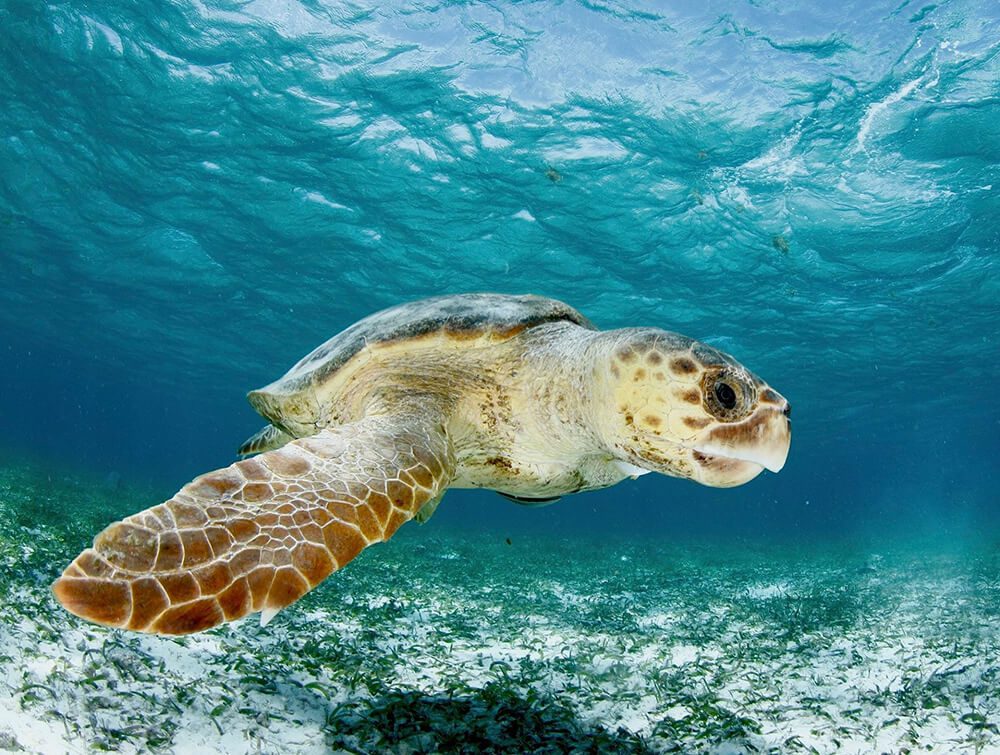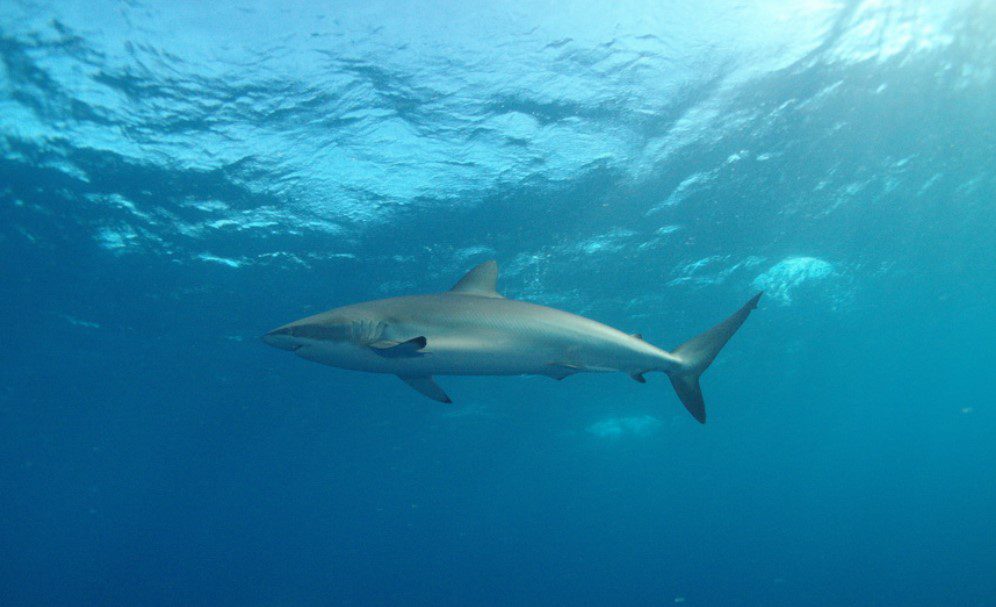Named for their large heads, loggerhead turtles have powerful jaws that are designed to crush hard prey. After hatching, the turtles spend the first 7 to 15 years of their lives in the open ocean. As they approach maturity, loggerheads move into nearshore coastal areas to forage and grow for several more years. Adults migrate hundreds to thousands of kilometers from their foraging grounds to the nesting beaches. Unlike reef-associated hawksbill and green turtles, you are unlikely to see many loggerheads while snorkeling or diving around coral reefs year-round. However, during the mating and nesting season in early spring and summer months, large males are common fixtures in the waters around nesting beaches. It is best to give them a wide berth during this time, lest you be mistaken for a female turtle.
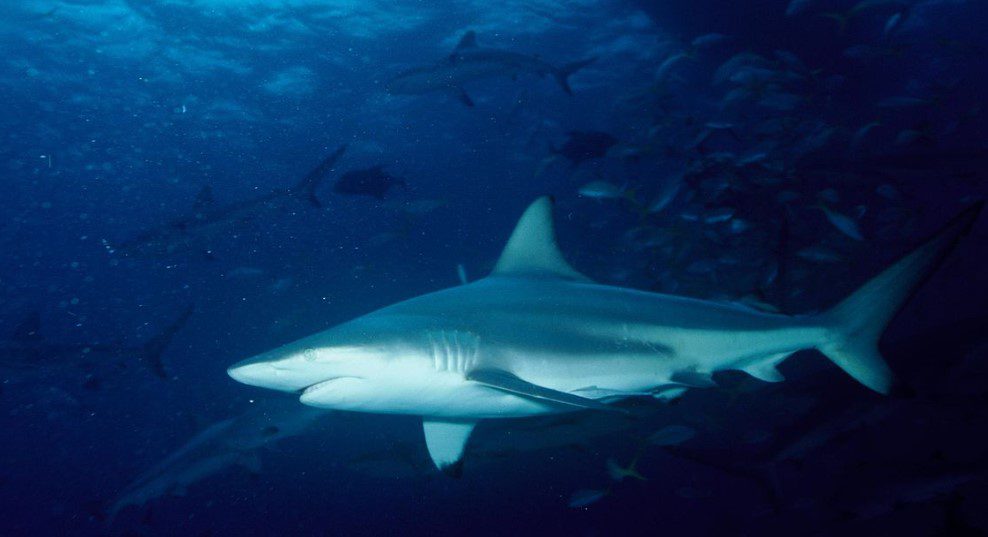
Blacktip shark
The blacktip shark is a sturdy, gray, medium-sized shark characterized by the black markings on the tips of its fins and a distinct white ‘z’

